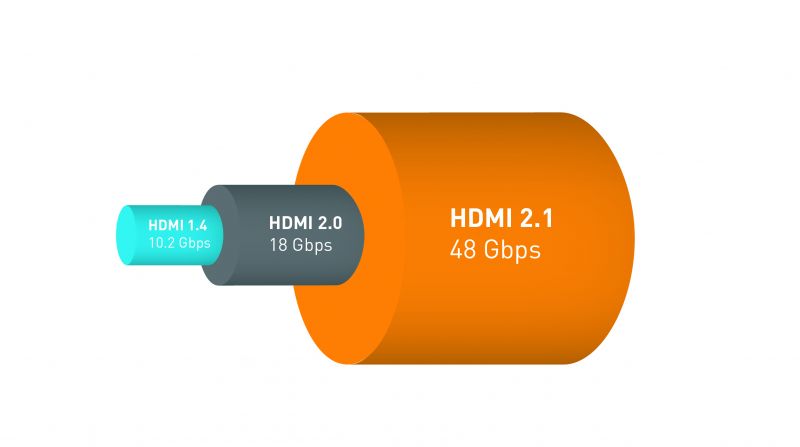
The list of video connections is vast, spanning 21 different interfaces, some of which date back to 1950s. Most of these connections were either proprietary or have been long retired. A connection that is almost ubiquitous, being found everywhere from midrange laptops to multi-thousand dollar television, is the High-Definition Multimedia Interface, or HDMI for short.
[REWIND: Sony Announces New Line of Pro-Oriented CFast Cards | What Does This Mean For XQD?]

HDMI 1.0 was reveled when it was introduced in 2002. The purely digital interface allowed for transfer rates up top 4.95 Gbit/s and could transfer both 1920 × 1080 at 60 Hz video and 8 channel LPCM/192 kHz/24-bit audio with on cable. More recently, specifications of the new HDMI 2.1 standard have been released with a bandwidth of almost 10x that of the first iteration.


HDMI Specification 2.1 Features Include:
- Higher video resolutions support a range of high resolutions and faster refresh rates including 8K60Hz and 4K120Hz for immersive viewing and smooth fast-action detail. Resolutions up to 10K are also supported for commercial AV, and industrial and specialty usages.
- Dynamic HDR support ensures every moment of a video is displayed at its ideal values for depth, detail, brightness, contrast and wider color gamut – on a scene-by-scene or even a frame-by frame basis.
- The Ultra High Speed HDMI Cable supports the 48G bandwidth for uncompressed HDMI 2.1 feature support. The cable also features very low EMI emission and is backwards compatible with earlier versions of the HDMI Specification and can be used with existing HDMI devices.
- eARC simplifies connectivity, provides greater ease of use, and supports the most advanced audio formats and highest audio quality. It ensures full compatibility between audio devices and upcoming HDMI 2.1 products.
- Enhanced refresh rate features ensure an added level of smooth and seamless motion and transitions for gaming, movies and video. They include:
- Variable Refresh Rate (VRR) reduces or eliminates lag, stutter and frame tearing for more fluid and better detailed gameplay.
- Quick Media Switching (QMS) for movies and video eliminates the delay that can result in blank screens before content is displayed.
- Quick Frame Transport (QFT) reduces latency for smoother no-lag gaming, and real-time interactive virtual reality.
- Auto Low Latency Mode (ALLM) allows the ideal latency setting to automatically be set allowing for smooth, lag-free and uninterrupted viewing and interactivity.

Supporting the 48Gbps, the new standard will be able to deliver uncompressed 8K/60p video or 10K/120p with compression. The upcoming interface and accompanying cables will be backwards compatible with the existing cache of HDMI devices.
The new standard from HDMI is huge as will bring better quality, higher resolution to supported devices, but those dedicated videophiles will be hard-pressed to find that it is only slightly better than Displayport 1.4. To find out more about the new standard you can check out the official HDMI site, here.




Get Connected!